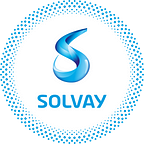Collaborative intelligence to shape the future of mobility
Every 3 years, a wide scope of companies from around the world gather at Movin’On to discuss the future of mobility. It’s a unique occasion to exchange with partners and customers and come up with new ideas and solutions in a new, collaborative way — and Solvay is an important part of it all.
Urbanization, sustainability, digitization… The challenges facing mobility today are massive, and no company can hope to face them alone. The answer is to look for solutions together, which is why in 1998, Michelin started what was originally called The Bibendum Challenge in the tire manufacturer’s hometown of Clermont-Ferrand, in central France.
A different type of gathering
Nearly twenty years later, the initiative has taken on another dimension, as Movin’On is the world’s most important conference on mobility. Neither a trade show nor a seminar of experts, it’s a prospective event gathering stakeholders in the fields of manufacturing, energy, transport, telecommunications, chemistry, etc., together with elected officials and scientists. After Chengdu in 2014, this year’s edition was held from 13 to 15 June in Montreal, with a focus on urban mobility.
The aim of such an event is to anticipate market changes and discover innovations (an impressive “innovation center” in a hangar with 12-meter high ceilings was devoted to that), but also to share experiences, facilitate collaboration and build a strong ecosystem around mobility as a whole, in a spirit of networking.
No mobility without chemistry
About 4,000 attendants gathered in Montreal, and Solvay, a gold partner of the event, was duly represented. Experts from the company participated in workshops and master classes on batteries, lightweighting and the circular economy.
“Batteries and lightweighting are two fields in which we are driving disruptive innovation for more durable, more accessible and more efficient mobility, explains Sébastien Piffard, in charge of Strategic Marketing and senior VP for Marketing excellence at Solvay. Our challenge is to educate the market about everything Solvay can provide to sustainable mobility, and Movin’On is the perfect platform for that. As for the circular economy, it’s an integral part of the very idea of sustainability, applied by taking into account the entire lifecycle of products to create a virtuous cycle of growth.”
As it happens, a great deal of these technologies for sustainable mobility were used for Solar Impulse, the solar airplane that flew around the world in 2016. Bertrand Piccard, the Swiss explorer behind the project, was a keynote speaker at Movin’On, emphasizing Solvay’s early implication and brightly summing up what innovation is all about: “It’s not the people who made the best candles that invented the lightbulb. To create innovation, you need to think outside the box.”
Solvay’s implication in an event such as Movin’On can seem a little surprising. But the fact is, chemistry and mobility have a lot to do together. “Mobility is actually one of the three main subjects of innovation at Solvay — along with energy and wellbeing, says Richard Thommeret, Communication Director at Solvay’s Research & Innovation department. Movin’ On is a unique occasion to engage this subject and confront our reflections in the early stages with issues met by people who are much further downstream in the value chain”, such as vehicle manufacturers, companies Solvay isn’t typically in contact with. “Participating in such an event is a way to put into application our will to become a multi-specialty company, which can only be done by better understanding what others do and no longer working in silos, adds S. Piffard. Also, this type of collaborative work is increasingly necessary as the world becomes more complex.”
Collaborating all year round
But this spirit of collaboration and networking doesn’t just pop up every three years. Underlying the Movin’On conferences is Open Lab, a group of stakeholders committed to sustainable mobility. Created in 2014 with the objective of advancing innovation and invention in sustainable mobility, with Solvay was a founding member, Open Lab’s advisory board now comprises some 150 companies. “With Open Lab, we can have a more holistic and systemic reflection by working together with other companies in order to have a better comprehension of a subject, explains Sophie Désormière, group General Manager for marketing and sales at Solvay. This enables us to build roadmaps for disruptive implementation.”
A current example of Open Lab’s work is “Let’s Drive Smartly”, an initiative through which a variety of companies work together to come up with innovative solutions in the field of smart cars. “We get inspiration from the issues others are working on, and it just happens that Solvay is an enabler in many different fields: man-machine interfaces, semiconductors, batteries, etc. There’s a lot of chemistry in all these applications”, says S. Désormière.
The Movin’On conferences complete this momentum for advancing new ideas by embodying, every three years, this new way of collaborating. “Movin’On is built upon the reflections that emerge from Open Lab, explains Sophie Désormière. Instead of every company presenting its products at a stand, we now think as an ecosystem, taking the entire value chain into account.” And this year, for the first time, Movin’On’s collaborative spirit was extended beyond companies involved in mobility, as public authorities were part of the event, creating new encounters and synergies. “We’re basically reversing the paradigm and placing the citizen in the center.”
“The reflections that emerge from Open Lab enable us to think as an ecosystem, taking the entire value chain into account.”
Learned something? Click the 💚 to help others find this article.
This article was first published on our website: Solvay.com
